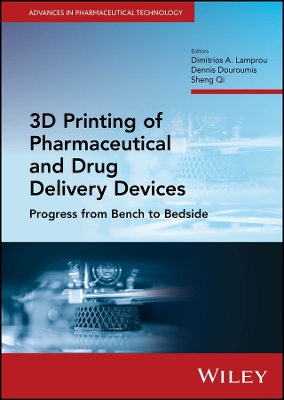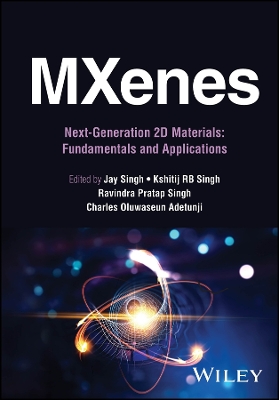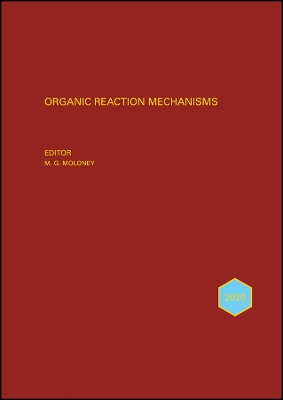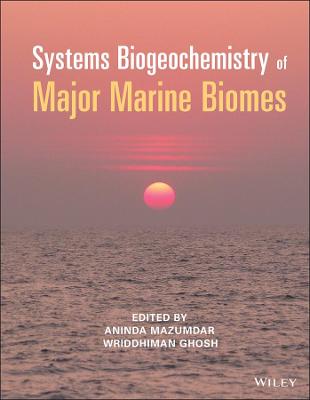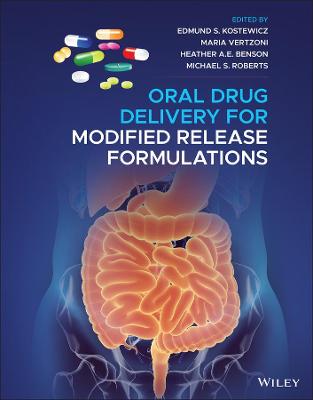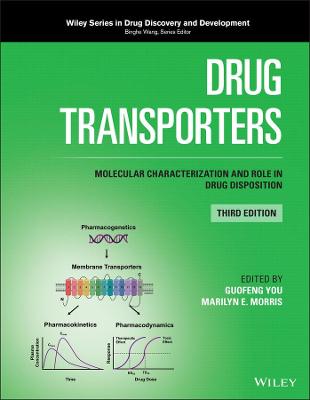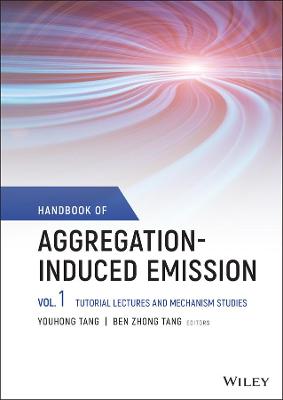Zinc Batteries
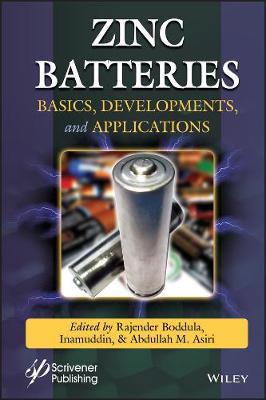 -15%
portes grátis
-15%
portes grátis
Zinc Batteries
Basics, Developments, and Applications
Asiri, Abdullah M.; Boddula, Rajender; Inamuddin
John Wiley & Sons Inc
06/2020
272
Dura
Inglês
9781119661894
15 a 20 dias
538
1 Carbon Nanomaterials for Zn-Ion Batteries 1
Prasun Banerjee, Adolfo Franco Jr, Rajender Boddula, K. Chandra Babu Naidu and Ramyakrishna Pothu
1.1 Introduction 2
1.2 Co4N (CN) - Carbon Fibers Network (CFN) -Carbon Cloth (CC) 2
1.3 N-Doping of Carbon Nanofibers 2
1.4 NiCo2S4 on Nitrogen-Doped Carbon Nanotubes 4
1.5 3D Phosphorous and Sulfur Co-Doped C3N4 Sponge With C Nanocrystal 5
1.6 2D Carbon Nanosheets 6
1.7 N-Doped Graphene Oxide With NiCo2O4 6
1.8 Conclusions 7
Acknowledgements 8
References 8
2 Construction, Working, and Applications of Different Zn-Based Batteries 11
G. Ranjith Kumar, K. Chandra Babu Naidu, D. Baba Basha, D. Prakash Babu, M.S.S.R.K.N. Sarma, Ramyakrishna Pothu, and Rajender Boddula
2.1 Introduction 12
2.2 History 13
2.3 Types of Batteries 14
2.3.1 Primary Battery 14
2.3.2 Secondary Battery 14
2.4 Zinc-Carbon Batteries 18
2.5 Zinc-Cerium Batteries 19
2.6 Zinc-Bromine Flow Batteries 20
References 21
3 Nickel and Cobalt Materials for Zn Batteries 25
Sonal Singh, Rishabh Sharma and Manika Khanuja
3.1 Introduction 26
3.2 Zinc Batteries 27
3.3 Nickel-Zinc Battery 27
3.3.1 History 27
3.3.2 Basics 28
3.3.3 Materials and Cost 30
3.3.4 Reliability 30
3.3.5 Voltage Drop 30
3.3.6 Performance 31
3.4 Advantages 31
3.5 Challenges 32
3.6 Effect of Metallic Additives, Cobalt and Zinc, on Nickel Electrode 32
3.7 Conclusion 33
References 34
4 Manganese-Based Materials for Zn Batteries 37
S. Ramesh, K. Chandrababu Naidu, K. Venkata Ratnam, H. Manjunatha, D. Baba Basha and A. Mallikarjauna
4.1 Introduction 37
4.2 History of the Zinc and Zinc Batteries 38
4.3 Characteristics of Batteries 41
4.3.1 Capacity 41
4.3.2 Current 41
4.3.3 Power Density 41
4.4 MN-Based Zn Batteries 42
4.5 Conclusion 44
References 47
5 Electrolytes for Zn-Ion Batteries 51
Praveen Kumar Yadav, Sapna Raghav, Jyoti Raghav and S. S. Swarupa Tripathy
5.1 Introduction 52
5.2 Electrolytes for Rechargeable Zinc Ion Batteries (RZIBs) 53
5.2.1 Aqueous Electrolytes (AqEs) 54
5.2.1.1 Pros and Cons of AEs 55
5.2.1.2 Neutral or Mildly Acidic Electrolytes 58
5.2.2 Non-Aqueous Electrolytes 59
5.2.2.1 Solid Polymer Electrolytes 60
5.2.2.2 Hydrogel or Gel Electrolytes 61
5.2.2.3 Gel Polymer Electrolytes 63
5.2.3 Ionic Liquid Electrolytes 63
5.2.4 Bio-Electrolyte 65
5.3 Summary 65
Abbreviation Table 66
Acknowledgments 66
References 67
6 Anode Materials for Zinc-Ion Batteries 73
Muhammad Mudassir Hassan, Muhammad Inam Khan, Abdur Rahim and Nawshad Muhammad
6.1 Introduction 73
6.2 Storage Mechanism 75
6.3 Zinc-Ion Battery Anodes 77
6.4 Future Prospects 81
6.5 Conclusion 81
References 82
7 Cathode Materials for Zinc-Air Batteries 85
Seyedeh Maryam Mousavi and Mohammad Reza Rahimpour
7.1 Introduction 85
7.1.1 Cathode Definition 86
7.2 Zinc Cathode Structure 87
7.3 Non-Valuable Materials for Cathode Electrocatalytic 89
7.4 Electrochemical Specifications of Activated Carbon as a Cathode 92
7.4.1 Electrochemical Evaluation of Cathode Substances La1?XCaxCoO3 Zinc Batteries 92
7.5 Extremely Durable and Inexpensive Cathode Air Catalyst 93
7.5.1 Co3O4/Mno2 NPs Dual Oxygen Catalyst as Cathode for Zn-Air Rechargeable Battery 94
7.5.2 Carbon Nanotubes (CNT) Employing Nitrogen as Catalyst in the Zinc/Air Battery System 94
7.5.3 Magnesium Oxide NPs Modified Catalyst for the Use of Air Electrodes in Zn/Air Batteries 94
7.5.4 Silver-Magnesium Oxide Nanocatalysts as Cathode for Zn-Air Batteries 95
7.5.5 One-Step Preparation of C-N Ni/Co-Doped Nanotube Hybrid as Outstanding Cathode Catalysts for Zinc-Air Batteries 95
7.6 Hierarchical Co3O4 Nano-Micro Array With Superior Working Characteristics Using Cathode Ray on Pliable and Rechargeable Battery 96
7.7 Dual Function Oxygen Catalyst Upon Active Iron-Based Zn-Air Rechargeable Batteries 97
7.7.1 Co4N and NC Fiber Coupling Connected to a Free-Acting Binary Cathode for Strong, Efficient, and Pliable Air Batteries 98
7.8 Conclusion 98
Nomenclature 99
References 99
8 Anode Materials for Zinc-Air Batteries 103
Abbas Ghareghashi and Ali Mohebbi
8.1 Introduction 104
8.2 Zinc Anodes 105
8.2.1 Downsizing of Zn Anodes 106
8.2.2 Design of Membrane Separators 107
8.2.3 The Use of ZnO Instead of Zn 108
8.2.4 Increase of Surface Area in Zn Anode Structure 110
8.2.5 Coating of Zn Anode 111
8.2.5.1 Bismuth Oxide-Based Glasses 112
8.2.5.2 Silica 114
8.2.5.3 Carbon Nanotubes 115
8.2.5.4 ZnO@C 116
8.2.5.5 Zn-Al LDHs 116
8.2.5.6 ZnO@C-ZnAl LDHs 118
8.2.5.7 Tapioca 119
8.2.5.8 TiO2 122
8.3 Conclusions 123
References 124
9 Safety and Environmental Impacts of Zn Batteries 131
Saurabh Sharma, Abhishek Anand, Amritanshu Shukla and Atul Sharma
9.1 Introduction 131
9.2 Working Principle of Zinc-Based Batteries 132
9.2.1 Zinc-Air Batteries Basic Principle and Advances 133
9.2.2 Zinc Organic Polymer Batteries 135
9.2.3 Zinc-Ion Batteries 137
9.2.3.1 Zinc-Silver Batteries 137
9.2.3.2 Zinc-Nickel Batteries 138
9.2.3.3 Zinc-Manganese Battery 140
9.3 Batteries: Environment Impact, Solution, and Safety 141
9.3.1 Disposal of Batteries and Environmental Impact 143
9.3.2 Recycling of Zinc-Based Batteries 143
9.4 Conclusion 146
Acknowledgement 147
References 147
10 Basics and Developments of Zinc-Air Batteries 151
Seyedeh Maryam Mousavi and Mohammad Reza Rahimpour
10.1 Introduction 151
10.1.1 Public Specifications 151
10.2 Zinc-Air Electrode Chemical Reaction 153
10.3 Zinc/Air Battery Construction 154
10.4 Primary Zn/Air Batteries 157
10.5 Principles of Configuration and Operation 159
10.6 Developments in Electrical Fuel Zn/Air Batteries 161
10.6.1 Zn/Air Versus Metal/Air Systems 161
10.7 Conclusion 162
References 164
11 History and Development of Zinc Batteries 167
Pallavi Jain, Sapna Raghav, Ankita Dhillon and Dinesh Kumar
11.1 Introduction 167
11.2 Basic Concept 169
11.2.1 Components of Batteries 169
11.2.2 Classification of Batteries 171
11.2.2.1 Primary Batteries 171
11.2.2.2 Secondary or Rechargeable Batteries (RBs) 171
11.3 Cell Operation 172
11.3.1 Process of Discharge 172
11.3.2 Process of Charge 172
11.4 History 173
11.5 Different Types of Zinc Batteries 174
11.5.1 Zinc-Carbon Batteries 174
11.5.2 Zinc/Manganese Oxide Batteries (Alkaline Batteries) 174
11.5.3 Zinc/Silver Oxide Battery 174
11.5.4 Zn-Air (Zn-O2) Batteries 176
11.5.4.1 Mechanically Rechargeable Batteries (Zn-O2 Batteries) 177
11.5.4.2 Electrically Rechargeable Batteries (Zn-O2 Batteries) 178
11.5.5 Hybrid Zn-O2 Batteries 178
11.5.5.1 Hybrid Zn-Ni/O2 Batteries 178
11.5.5.2 Hybrid Zn-Co/O2 Batteries 179
11.5.6 Aqueous Zinc-Ion Rechargeable Batteries 180
11.5.6.1 Zn2+ Insertion/Extraction Mechanism 180
11.5.6.2 Chemical Conversion Mechanism 180
11.5.6.3 H+ and Zn2+ Insertion/Extraction Mechanism 181
11.6 Future Perspectives 181
11.7 Conclusion 182
Abbreviations 182
Acknowledgement 183
References 183
12 Electrolytes for Zinc-Air Batteries 187
Zahra Farmani, Mohammad Amin Sedghamiz, and Mohammad Reza Rahimpour
12.1 Introduction 187
12.2 Aqueous Electrolytes 188
12.2.1 Alkaline Electrolytes 189
12.2.1.1 Dissolution of Zinc in Alkaline Systems 189
12.2.1.2 Insoluble Carbonates Precipitation 192
12.2.1.3 Effect of Water 193
12.2.1.4 Hydrogen Evolution 194
12.2.2 Neutral Electrolytes 195
12.2.3 Acidic Electrolytes 196
12.3 Electrolytes of Non-Aqueous 197
12.3.1 Non-Aqueous Electrolytes 199
12.3 Summary 203
References 206
13 Security, Storage, Handling, Influences and Disposal/Recycling of Zinc Batteries 215
Manju Yadav and Dinesh Kumar
13.1 Introduction 215
13.2 Security of Zinc Battery 217
13.2.1 Modifications for Improving Performance 218
13.2.1.1 High Surface Area 218
13.2.1.2 Carbon-Based Electrode Additives 221
13.2.1.3 Discharge-Capturing Electrode Additives 221
13.2.1.4 Electrode Coatings 222
13.2.1.5 Electrolyte Additives 222
13.2.1.6 Heavy-Metals Electrode Additive 222
13.2.1.7 Polymeric Binders 223
13.2.2 Storage and Handling 224
13.3 Influence of Zinc Battery 224
13.3.1 Consumption of Natural Resources 225
13.3.2 Toxicity of Batteries to Humans 226
13.3.3 Toxicity of Batteries to the Aquatic Environment 226
13.4 Disposal/Recycling Options 227
Acknowledgement 228
References 228
14 Materials for Ni-Zn Batteries 235
Vaishali Tomar and Dinesh Kumar
14.1 Introduction 235
14.1.1 Functioning Principles of Nickel-Zinc Battery 237
14.1.2 Ni-Zn Battery Design 238
14.2 Expansion of Ni-Zn Battery 239
14.2.1 Active Materials for the Battery 240
14.3 Application 241
14.4 Conclusion 242
Acknowledgement 243
References 243
Index 249
1 Carbon Nanomaterials for Zn-Ion Batteries 1
Prasun Banerjee, Adolfo Franco Jr, Rajender Boddula, K. Chandra Babu Naidu and Ramyakrishna Pothu
1.1 Introduction 2
1.2 Co4N (CN) - Carbon Fibers Network (CFN) -Carbon Cloth (CC) 2
1.3 N-Doping of Carbon Nanofibers 2
1.4 NiCo2S4 on Nitrogen-Doped Carbon Nanotubes 4
1.5 3D Phosphorous and Sulfur Co-Doped C3N4 Sponge With C Nanocrystal 5
1.6 2D Carbon Nanosheets 6
1.7 N-Doped Graphene Oxide With NiCo2O4 6
1.8 Conclusions 7
Acknowledgements 8
References 8
2 Construction, Working, and Applications of Different Zn-Based Batteries 11
G. Ranjith Kumar, K. Chandra Babu Naidu, D. Baba Basha, D. Prakash Babu, M.S.S.R.K.N. Sarma, Ramyakrishna Pothu, and Rajender Boddula
2.1 Introduction 12
2.2 History 13
2.3 Types of Batteries 14
2.3.1 Primary Battery 14
2.3.2 Secondary Battery 14
2.4 Zinc-Carbon Batteries 18
2.5 Zinc-Cerium Batteries 19
2.6 Zinc-Bromine Flow Batteries 20
References 21
3 Nickel and Cobalt Materials for Zn Batteries 25
Sonal Singh, Rishabh Sharma and Manika Khanuja
3.1 Introduction 26
3.2 Zinc Batteries 27
3.3 Nickel-Zinc Battery 27
3.3.1 History 27
3.3.2 Basics 28
3.3.3 Materials and Cost 30
3.3.4 Reliability 30
3.3.5 Voltage Drop 30
3.3.6 Performance 31
3.4 Advantages 31
3.5 Challenges 32
3.6 Effect of Metallic Additives, Cobalt and Zinc, on Nickel Electrode 32
3.7 Conclusion 33
References 34
4 Manganese-Based Materials for Zn Batteries 37
S. Ramesh, K. Chandrababu Naidu, K. Venkata Ratnam, H. Manjunatha, D. Baba Basha and A. Mallikarjauna
4.1 Introduction 37
4.2 History of the Zinc and Zinc Batteries 38
4.3 Characteristics of Batteries 41
4.3.1 Capacity 41
4.3.2 Current 41
4.3.3 Power Density 41
4.4 MN-Based Zn Batteries 42
4.5 Conclusion 44
References 47
5 Electrolytes for Zn-Ion Batteries 51
Praveen Kumar Yadav, Sapna Raghav, Jyoti Raghav and S. S. Swarupa Tripathy
5.1 Introduction 52
5.2 Electrolytes for Rechargeable Zinc Ion Batteries (RZIBs) 53
5.2.1 Aqueous Electrolytes (AqEs) 54
5.2.1.1 Pros and Cons of AEs 55
5.2.1.2 Neutral or Mildly Acidic Electrolytes 58
5.2.2 Non-Aqueous Electrolytes 59
5.2.2.1 Solid Polymer Electrolytes 60
5.2.2.2 Hydrogel or Gel Electrolytes 61
5.2.2.3 Gel Polymer Electrolytes 63
5.2.3 Ionic Liquid Electrolytes 63
5.2.4 Bio-Electrolyte 65
5.3 Summary 65
Abbreviation Table 66
Acknowledgments 66
References 67
6 Anode Materials for Zinc-Ion Batteries 73
Muhammad Mudassir Hassan, Muhammad Inam Khan, Abdur Rahim and Nawshad Muhammad
6.1 Introduction 73
6.2 Storage Mechanism 75
6.3 Zinc-Ion Battery Anodes 77
6.4 Future Prospects 81
6.5 Conclusion 81
References 82
7 Cathode Materials for Zinc-Air Batteries 85
Seyedeh Maryam Mousavi and Mohammad Reza Rahimpour
7.1 Introduction 85
7.1.1 Cathode Definition 86
7.2 Zinc Cathode Structure 87
7.3 Non-Valuable Materials for Cathode Electrocatalytic 89
7.4 Electrochemical Specifications of Activated Carbon as a Cathode 92
7.4.1 Electrochemical Evaluation of Cathode Substances La1?XCaxCoO3 Zinc Batteries 92
7.5 Extremely Durable and Inexpensive Cathode Air Catalyst 93
7.5.1 Co3O4/Mno2 NPs Dual Oxygen Catalyst as Cathode for Zn-Air Rechargeable Battery 94
7.5.2 Carbon Nanotubes (CNT) Employing Nitrogen as Catalyst in the Zinc/Air Battery System 94
7.5.3 Magnesium Oxide NPs Modified Catalyst for the Use of Air Electrodes in Zn/Air Batteries 94
7.5.4 Silver-Magnesium Oxide Nanocatalysts as Cathode for Zn-Air Batteries 95
7.5.5 One-Step Preparation of C-N Ni/Co-Doped Nanotube Hybrid as Outstanding Cathode Catalysts for Zinc-Air Batteries 95
7.6 Hierarchical Co3O4 Nano-Micro Array With Superior Working Characteristics Using Cathode Ray on Pliable and Rechargeable Battery 96
7.7 Dual Function Oxygen Catalyst Upon Active Iron-Based Zn-Air Rechargeable Batteries 97
7.7.1 Co4N and NC Fiber Coupling Connected to a Free-Acting Binary Cathode for Strong, Efficient, and Pliable Air Batteries 98
7.8 Conclusion 98
Nomenclature 99
References 99
8 Anode Materials for Zinc-Air Batteries 103
Abbas Ghareghashi and Ali Mohebbi
8.1 Introduction 104
8.2 Zinc Anodes 105
8.2.1 Downsizing of Zn Anodes 106
8.2.2 Design of Membrane Separators 107
8.2.3 The Use of ZnO Instead of Zn 108
8.2.4 Increase of Surface Area in Zn Anode Structure 110
8.2.5 Coating of Zn Anode 111
8.2.5.1 Bismuth Oxide-Based Glasses 112
8.2.5.2 Silica 114
8.2.5.3 Carbon Nanotubes 115
8.2.5.4 ZnO@C 116
8.2.5.5 Zn-Al LDHs 116
8.2.5.6 ZnO@C-ZnAl LDHs 118
8.2.5.7 Tapioca 119
8.2.5.8 TiO2 122
8.3 Conclusions 123
References 124
9 Safety and Environmental Impacts of Zn Batteries 131
Saurabh Sharma, Abhishek Anand, Amritanshu Shukla and Atul Sharma
9.1 Introduction 131
9.2 Working Principle of Zinc-Based Batteries 132
9.2.1 Zinc-Air Batteries Basic Principle and Advances 133
9.2.2 Zinc Organic Polymer Batteries 135
9.2.3 Zinc-Ion Batteries 137
9.2.3.1 Zinc-Silver Batteries 137
9.2.3.2 Zinc-Nickel Batteries 138
9.2.3.3 Zinc-Manganese Battery 140
9.3 Batteries: Environment Impact, Solution, and Safety 141
9.3.1 Disposal of Batteries and Environmental Impact 143
9.3.2 Recycling of Zinc-Based Batteries 143
9.4 Conclusion 146
Acknowledgement 147
References 147
10 Basics and Developments of Zinc-Air Batteries 151
Seyedeh Maryam Mousavi and Mohammad Reza Rahimpour
10.1 Introduction 151
10.1.1 Public Specifications 151
10.2 Zinc-Air Electrode Chemical Reaction 153
10.3 Zinc/Air Battery Construction 154
10.4 Primary Zn/Air Batteries 157
10.5 Principles of Configuration and Operation 159
10.6 Developments in Electrical Fuel Zn/Air Batteries 161
10.6.1 Zn/Air Versus Metal/Air Systems 161
10.7 Conclusion 162
References 164
11 History and Development of Zinc Batteries 167
Pallavi Jain, Sapna Raghav, Ankita Dhillon and Dinesh Kumar
11.1 Introduction 167
11.2 Basic Concept 169
11.2.1 Components of Batteries 169
11.2.2 Classification of Batteries 171
11.2.2.1 Primary Batteries 171
11.2.2.2 Secondary or Rechargeable Batteries (RBs) 171
11.3 Cell Operation 172
11.3.1 Process of Discharge 172
11.3.2 Process of Charge 172
11.4 History 173
11.5 Different Types of Zinc Batteries 174
11.5.1 Zinc-Carbon Batteries 174
11.5.2 Zinc/Manganese Oxide Batteries (Alkaline Batteries) 174
11.5.3 Zinc/Silver Oxide Battery 174
11.5.4 Zn-Air (Zn-O2) Batteries 176
11.5.4.1 Mechanically Rechargeable Batteries (Zn-O2 Batteries) 177
11.5.4.2 Electrically Rechargeable Batteries (Zn-O2 Batteries) 178
11.5.5 Hybrid Zn-O2 Batteries 178
11.5.5.1 Hybrid Zn-Ni/O2 Batteries 178
11.5.5.2 Hybrid Zn-Co/O2 Batteries 179
11.5.6 Aqueous Zinc-Ion Rechargeable Batteries 180
11.5.6.1 Zn2+ Insertion/Extraction Mechanism 180
11.5.6.2 Chemical Conversion Mechanism 180
11.5.6.3 H+ and Zn2+ Insertion/Extraction Mechanism 181
11.6 Future Perspectives 181
11.7 Conclusion 182
Abbreviations 182
Acknowledgement 183
References 183
12 Electrolytes for Zinc-Air Batteries 187
Zahra Farmani, Mohammad Amin Sedghamiz, and Mohammad Reza Rahimpour
12.1 Introduction 187
12.2 Aqueous Electrolytes 188
12.2.1 Alkaline Electrolytes 189
12.2.1.1 Dissolution of Zinc in Alkaline Systems 189
12.2.1.2 Insoluble Carbonates Precipitation 192
12.2.1.3 Effect of Water 193
12.2.1.4 Hydrogen Evolution 194
12.2.2 Neutral Electrolytes 195
12.2.3 Acidic Electrolytes 196
12.3 Electrolytes of Non-Aqueous 197
12.3.1 Non-Aqueous Electrolytes 199
12.3 Summary 203
References 206
13 Security, Storage, Handling, Influences and Disposal/Recycling of Zinc Batteries 215
Manju Yadav and Dinesh Kumar
13.1 Introduction 215
13.2 Security of Zinc Battery 217
13.2.1 Modifications for Improving Performance 218
13.2.1.1 High Surface Area 218
13.2.1.2 Carbon-Based Electrode Additives 221
13.2.1.3 Discharge-Capturing Electrode Additives 221
13.2.1.4 Electrode Coatings 222
13.2.1.5 Electrolyte Additives 222
13.2.1.6 Heavy-Metals Electrode Additive 222
13.2.1.7 Polymeric Binders 223
13.2.2 Storage and Handling 224
13.3 Influence of Zinc Battery 224
13.3.1 Consumption of Natural Resources 225
13.3.2 Toxicity of Batteries to Humans 226
13.3.3 Toxicity of Batteries to the Aquatic Environment 226
13.4 Disposal/Recycling Options 227
Acknowledgement 228
References 228
14 Materials for Ni-Zn Batteries 235
Vaishali Tomar and Dinesh Kumar
14.1 Introduction 235
14.1.1 Functioning Principles of Nickel-Zinc Battery 237
14.1.2 Ni-Zn Battery Design 238
14.2 Expansion of Ni-Zn Battery 239
14.2.1 Active Materials for the Battery 240
14.3 Application 241
14.4 Conclusion 242
Acknowledgement 243
References 243
Index 249

